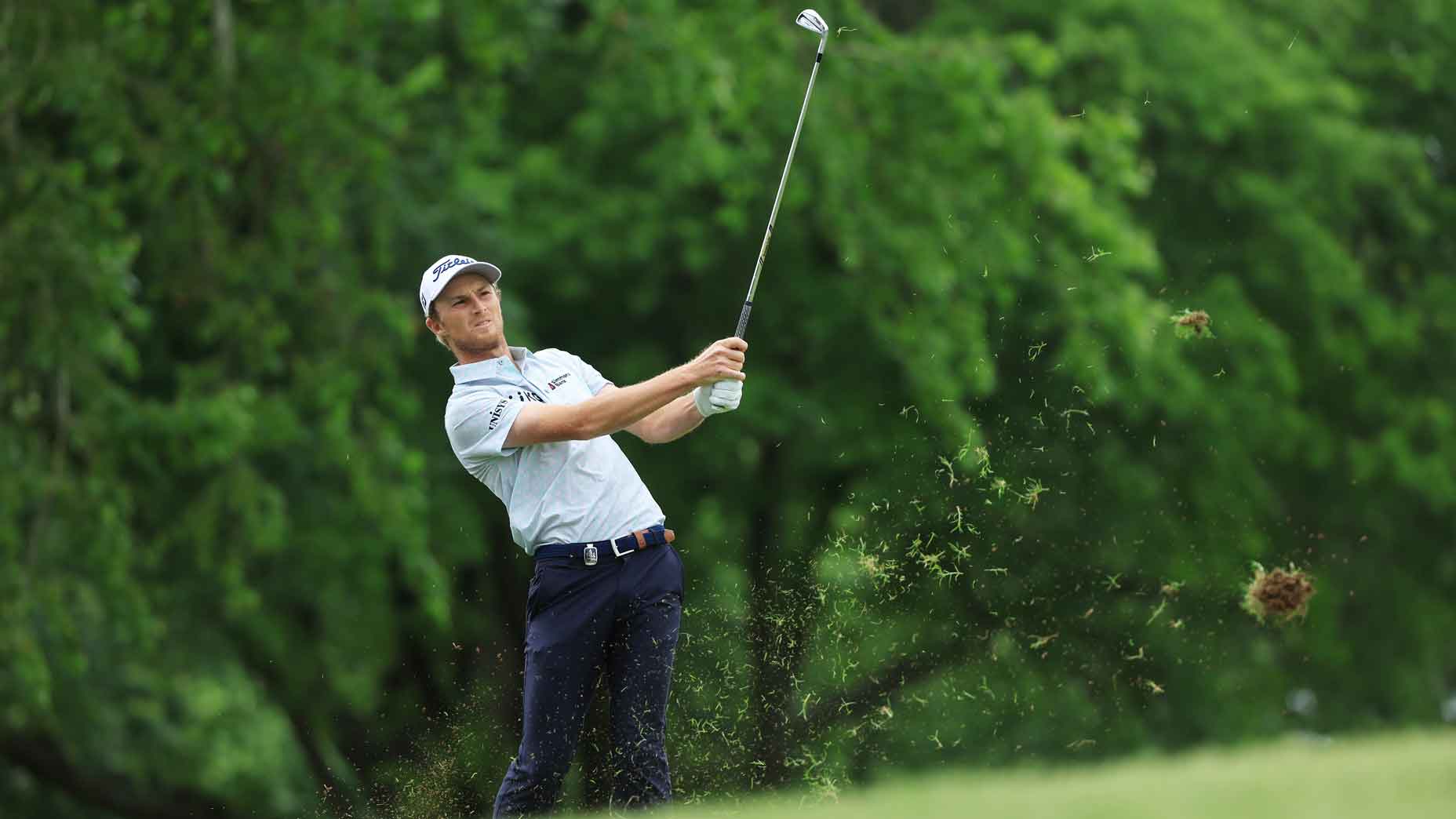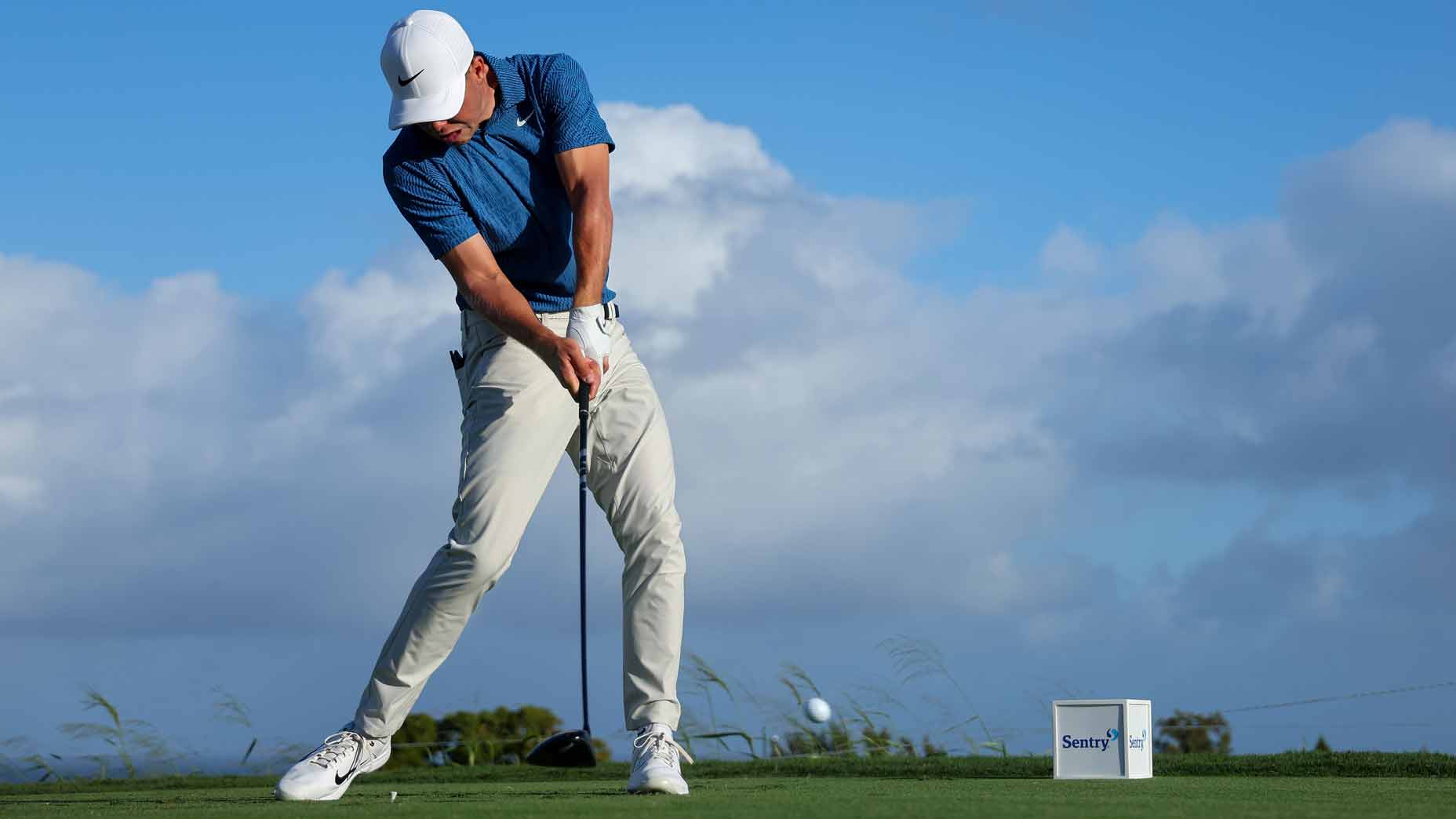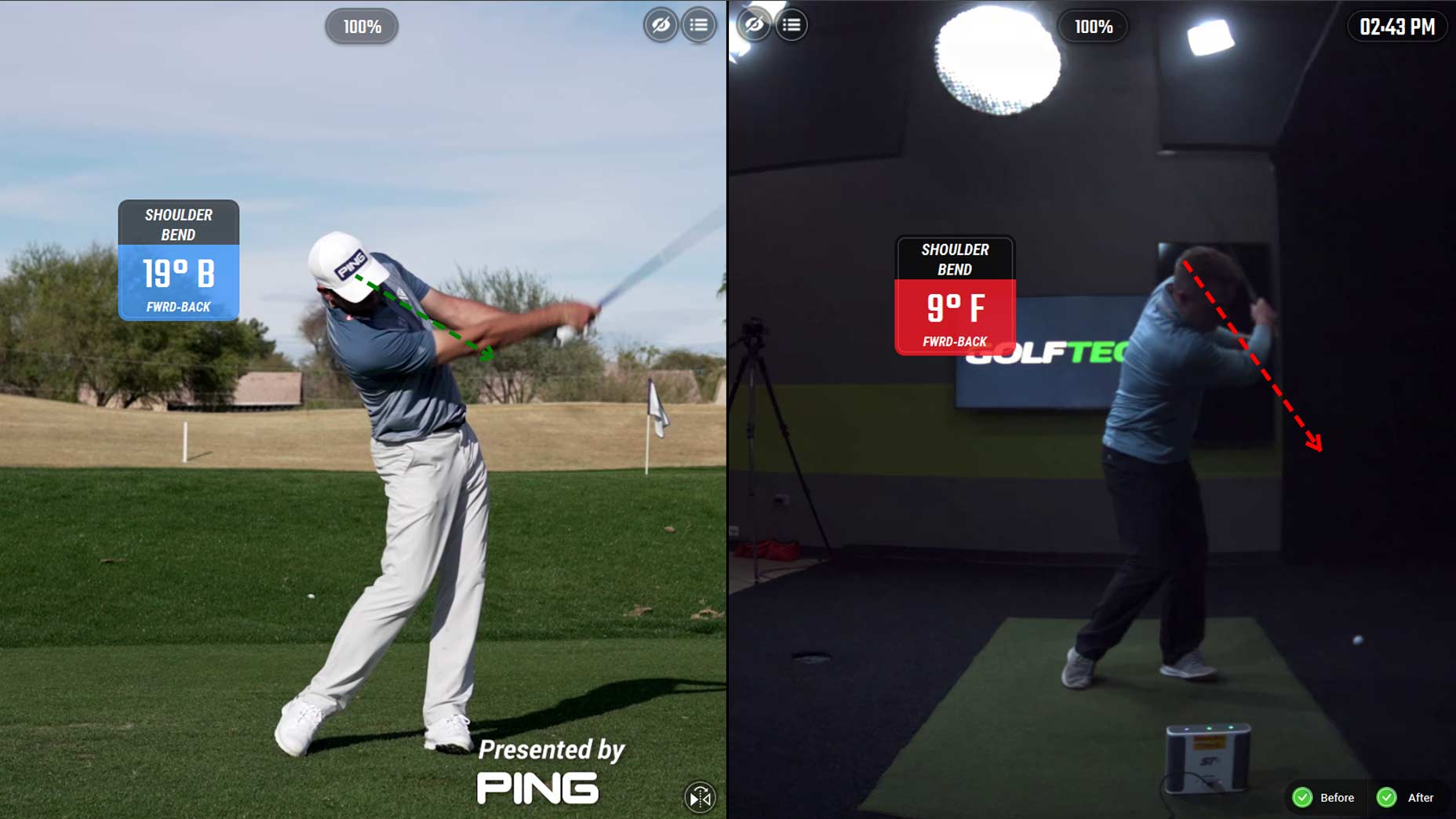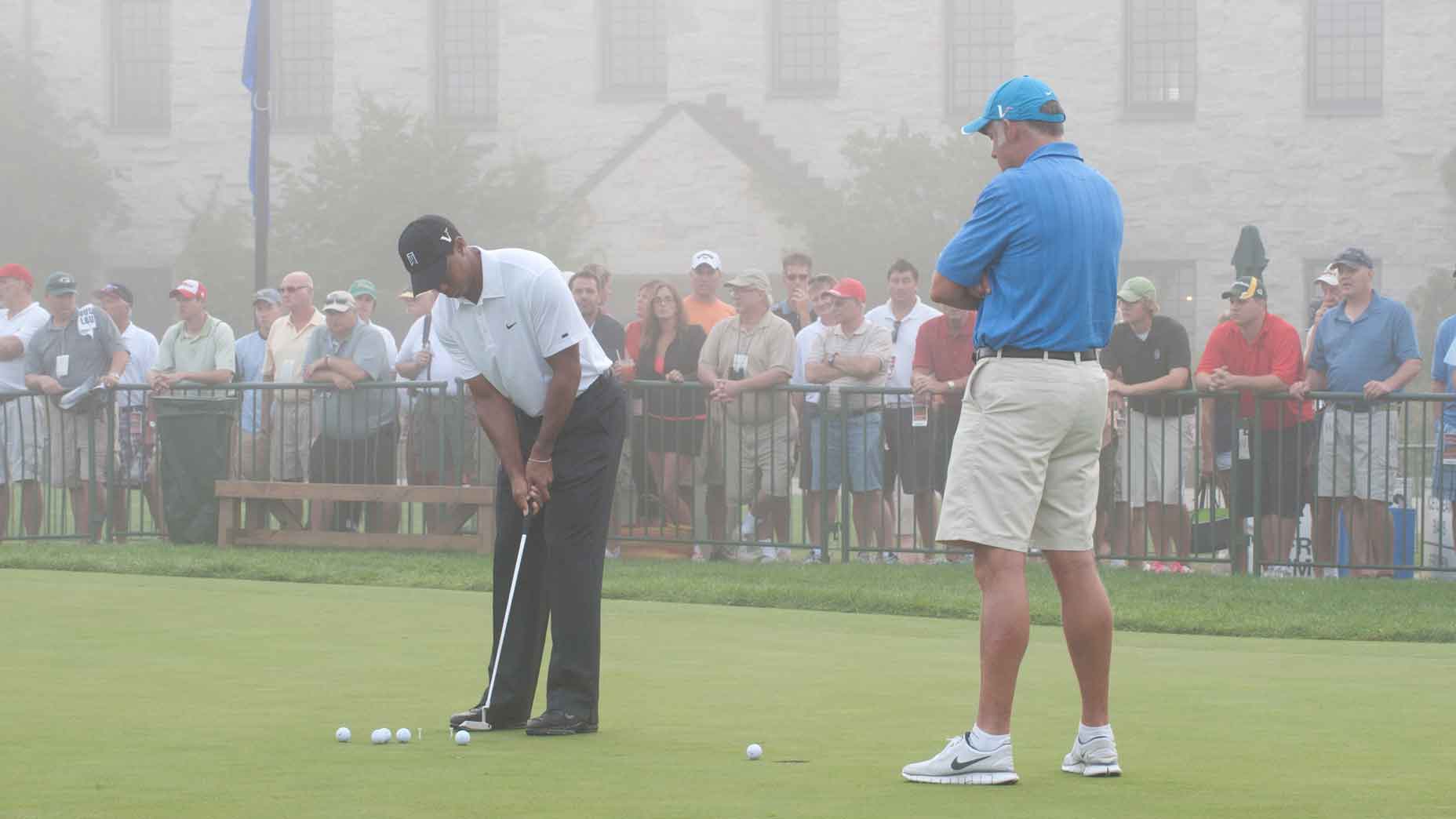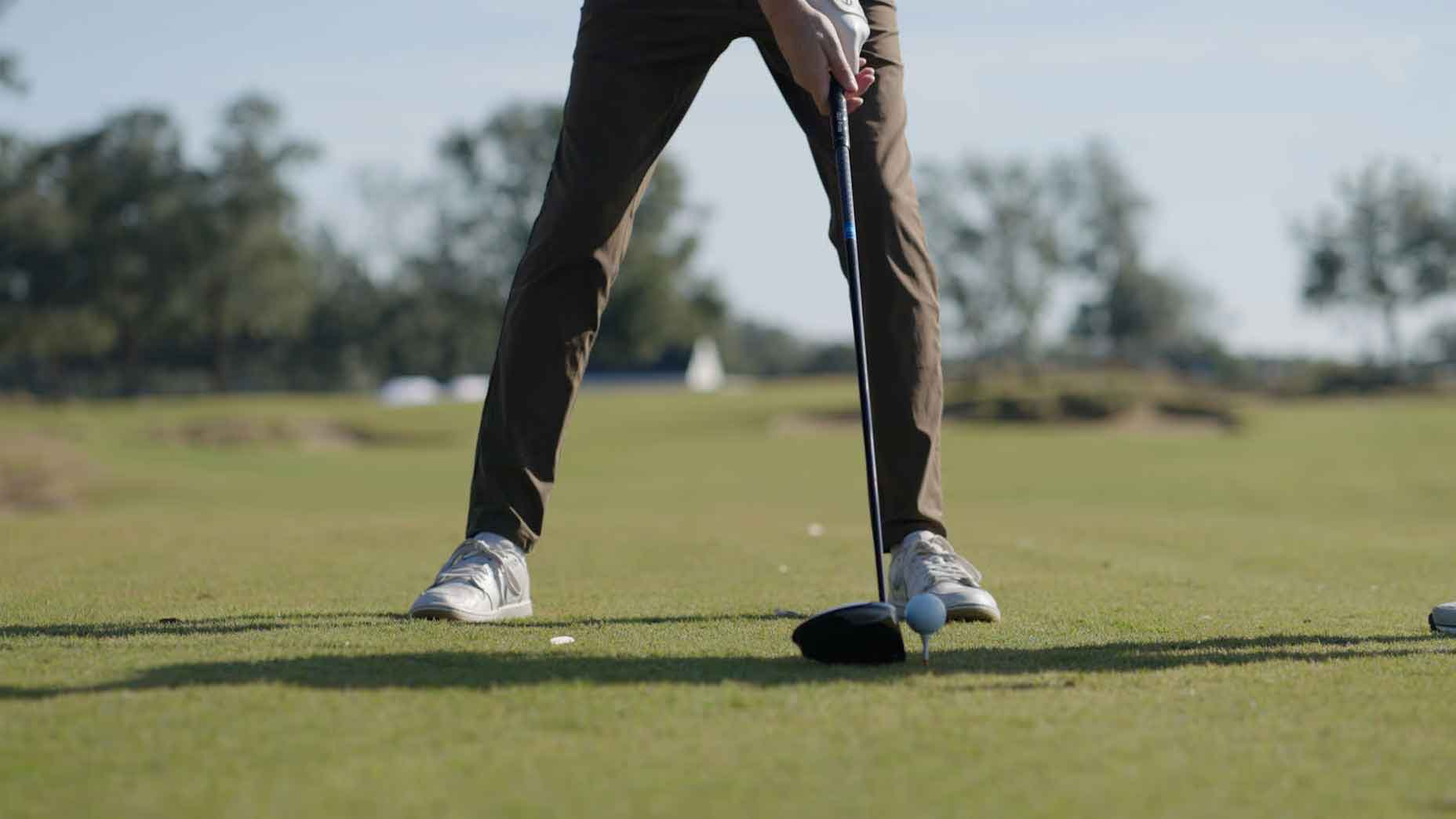If you’ve been following previous editions of this column, you know there’s an embedded theme behind our advice: In general, golfers don’t need better drills, they need better strategies.
With rare exception, a Tour-level approach (and not a Tour-level swing, like current sharpshooter Will Zalatoris, above) is the thing standing in the way of better scores. At GOLFTEC, millions of data points have taught us that players spend too much time on things of too little consequence. If you aspire to jump from the B- or C-flight into the A-flight of your club championship, you have to focus on the things that matter. Things like your dispersion.
For players looking to make a leap, hitting better full swing shots is the best avenue to shooting lower scores, and a data set of more than 10,000 different GOLFTEC swings agrees. The chart below shows the average 7-iron dispersion from a few key groups of golfers — scratch players, 8-handicaps and 13-handicaps. The “width” and “depth” values show the average distance from the center of the target for each group. To give you the clearest possible picture, we’ve also cleaned the data set, removing the worst 30 percent of mishits.
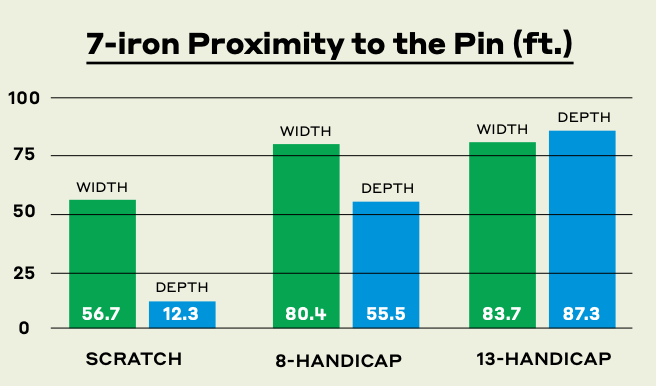
Check out the first column for each handicap level: the width of the shot pattern. Obviously, better players hit straighter iron shots. On average, the best players have better command of the face-to-path relationship that dictates accuracy. Unsurprisingly, scratch players hit shots that are eight yards closer to the target than 8-handicaps. But 8-handicap golfers have a dispersion only three feet narrower than 13-handicaps.
Now take a look at the second column, which accounts for shot depth for each handicap level. Scratch players have a depth dispersion of 36 feet on their best shots, while 8-handicaps have an average depth of 56 feet, or close to 40 percent larger. Still, those two numbers pale in comparison to the 13-handicaps, whose depth dispersion balloons to 90 feet. Relative to scratch players, 13-handicaps are nearly two times worse at predicting how far their shots are going to travel from a perfect lie. It should come as no surprise that as a player’s index rises, their depth dispersion grows exponentially.
What does this teach us? For those hoping to see improvement in their scores, it’s not enough to hit the ball straight. Rather, it’s equally important to hit the ball the proper distance. Of course, no player can hit every shot perfectly, but those who can rein in the size of their own dispersion chart will see a similar improvement in their overall scores.
To do this, you need to work on improving your ball striking. Head over to GOLFTEC.com and find your nearest swing coach. We’ll get your swing (and head) right in no time.
GOLFTEC teaching professional Keith Clearwater is based at the company’s headquarters in Denver, Colo.
